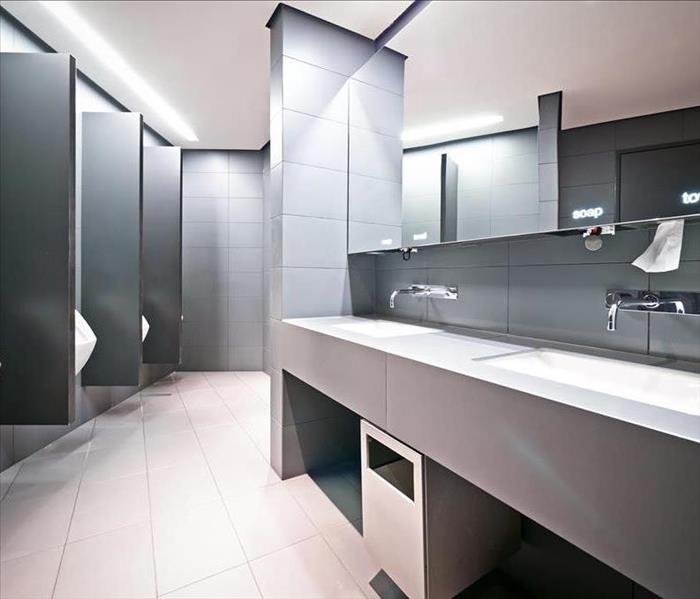The Sewer Damage Cleanup Process
2/18/2022 (Permalink)
 Follow these tips if you experience a Sewer Damage Cleanup Process in your Colorado Springs, CO, property.
Follow these tips if you experience a Sewer Damage Cleanup Process in your Colorado Springs, CO, property.
An overflowing toilet in the public restroom of your commercial building in Colorado Springs, CO, may not seem like that big a deal at first, especially if the mess is mopped up quickly. The staff who responds to the crisis initially, however, only sees what happens on the surface.
What to do if you Experience Sewer Damage?
An overflow is likely to cause sewer damage not only to the floorboards under the bathroom tile but also to the ceiling of the space directly beneath it. The cleanup process must be swift and thorough to prevent ongoing issues.
1. Assessment of Sewer Damage
The first thing you need to do is call a reliable sewage mitigation company. When the team arrives, the technicians assess the damage to the building and provide a report that contains valuable information:
- Extent of the damage
- Cleanup procedures recommended
- Estimated cost for restoration
The team leader can guide you through what the cleanup process will entail and give you a general timeline for when you can reasonably expect the sewage company to complete the repairs. Submit this report with your insurance claim to verify the work that is being done.
2. Removal of Water and Materials
Before technicians can clean the area, they must remove everything that doesn't belong in the space. If there is still standing water in the restroom, between the floors or leaking into the room below, it has to be pumped out. Then the team tears out all materials that show signs of sewer damage. This is likely to include flooring, ceiling tiles, insulation and drywall with which the contaminated water came into contact.
3. Disinfection of Affected Space
After all ruined materials have been removed, it's time to disinfect and deodorize the area. Sewage contains bacteria and other microbes that you certainly don't want to be left in your building. The mitigation crew uses industrial cleaners to sanitize the space. Technicians also may use an ozone machine or other treatments to remove any foul odors that linger.
4. Drying Area
It's not enough for the space around and underneath the flooded toilet to be clean; it must also be dry. This is one of the key steps for preventing secondary damage such as mold growth, which thrives in damp environments. Every remaining surface in the area must be dried. Technicians can also ensure that the humidity level is in an acceptable range so that moisture does not become an issue.
5. Rebuilding the Structure
The last step of the restoration process is replacing all the materials that were torn out. Technicians rebuild walls and add new ceiling tiles. They install new insulation and flooring and make sure that it matches the remaining structure. When it is finished, you shouldn't be able to tell where the old tiles end and the new ones begin.
When there is a problem with your building stemming from an overflow on an upper level, the floors beneath it are also in danger of sustaining sewer damage. Call a remediation company so that you can get the cleanup process started as soon as possible. Fast action prevents further issues and gets your building back to normal in a timely manner.




 24/7 Emergency Service
24/7 Emergency Service